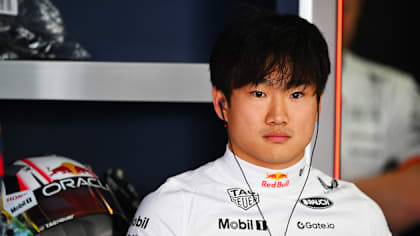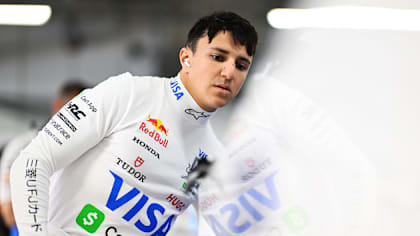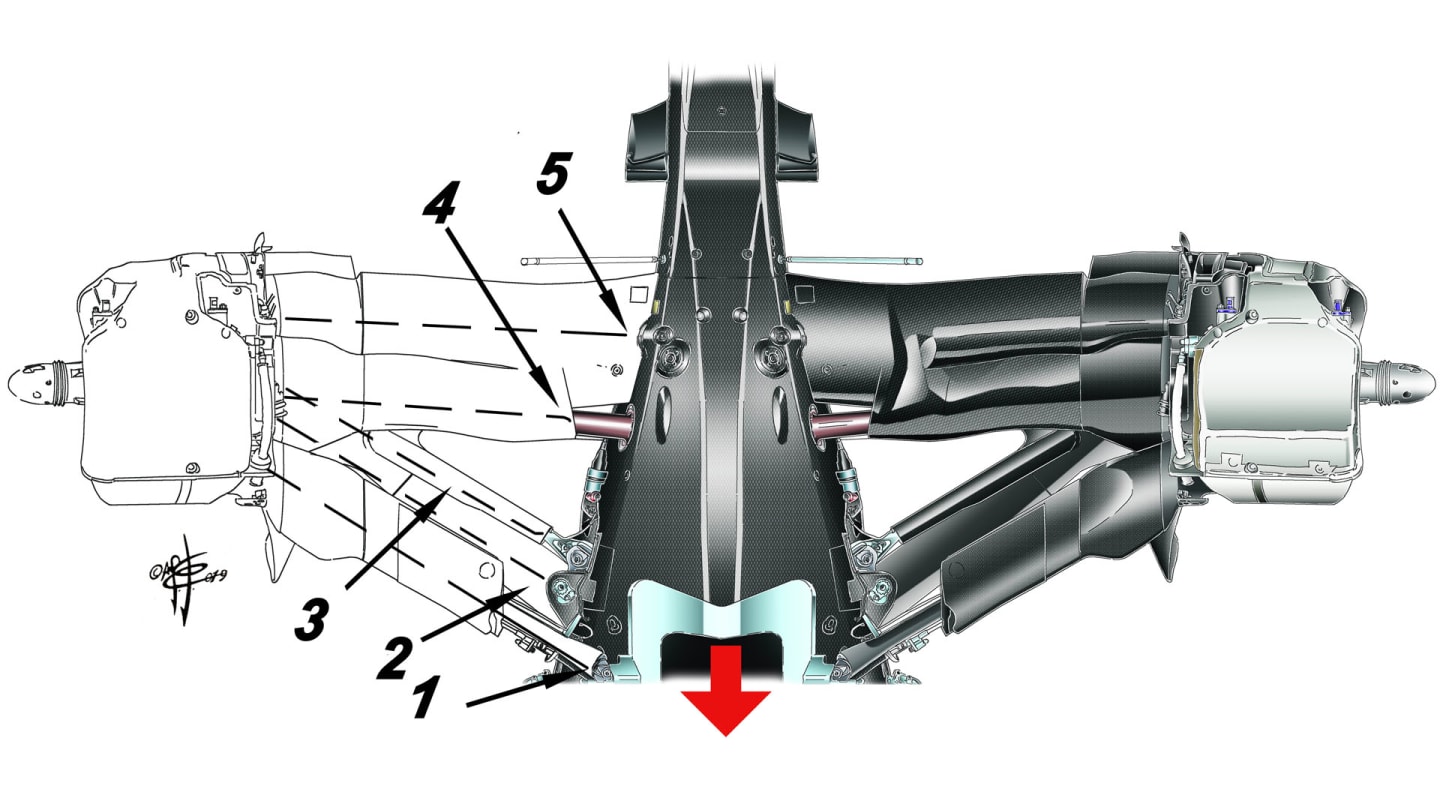
Technical
TECH TUESDAY: How the Mercedes W10 devours slow-speed corners

Share

The layout of the Montreal circuit, host of last weekend's Canadian Grand Prix, allowed the quite different characteristics of the Mercedes W10 and Ferrari SF90 to be very competitive with each other for once – and this was key to the superb race-long dice between Sebastian Vettel and Lewis Hamilton.
The Ferrari’s lower drag counted for more lap time around here than at conventional circuits, because of the high proportion of straights. The Merc’s greater downforce was worth less lap time than usual because of relatively few corners.
In qualifying, the Ferrari was gaining 0.6s on Mercedes down the straights and the Merc was clawing only 0.4s of that back through the corners, a very different trade-off to that seen at more conventional circuits. With both engines in race modes, around 0.2s of Ferrari’s qualifying straight-line advantage disappeared – giving them near-equal lap time capability on race day, but delivered in different ways.
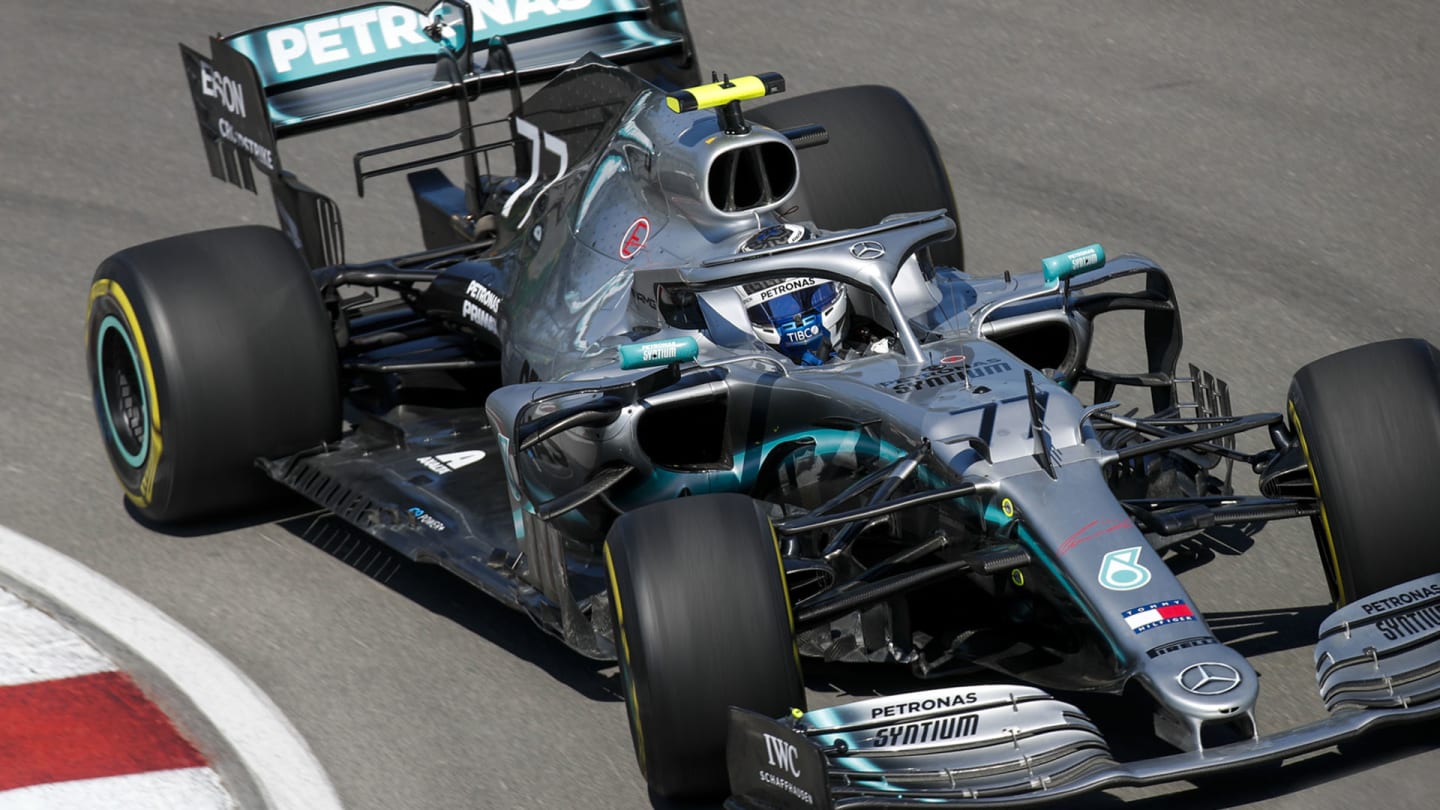
A core part of the design concept of the Mercedes W10 has been to increase rear downforce, especially at low speeds, even if it has meant an increase in drag. This is a major part of why the Merc, despite its long wheelbase, is now the fastest car through slow corners, correcting a previous weakness.
READ MORE: How front suspension tweaks are seeing lap times tumble in 2019
Watching Vettel and Hamilton in action, it could be seen how the Ferrari needed more steering lock through the slow corners, while the Mercedes pivoted around its outer front tyre much earlier into the corner, allowing Hamilton to take off the lock almost as soon as he’d applied it. As Valtteri Bottas has conceded, ‘the car rotates very well’. The rear end can withstand a sudden lateral acceleration without developing into an oversteer slide simply because it has more downforce pressing it down.
ONBOARD COMPARISON: How Vettel beat Hamilton to pole in Canada
There has been a significant reconfiguration of the rear suspension in order to help facilitate the bodywork changes responsible for the greater downforce. But it’s possible these changes have brought a change in mechanical dynamics that may be contributing too.
The key difference is that the front and rear legs forming the lower wishbone have been separated out to connect with the wheel upright at two separate points. The track rod (used to control the wheel’s tracking) remains conjoined to the rear leg, but the track rod/rear leg are no longer part of a single unit with the front leg – hence it should really lose its previous name of the ‘Z-bone’ (a name given to reflect the Z shape formed by the previous track rod/rear leg/front leg construction).
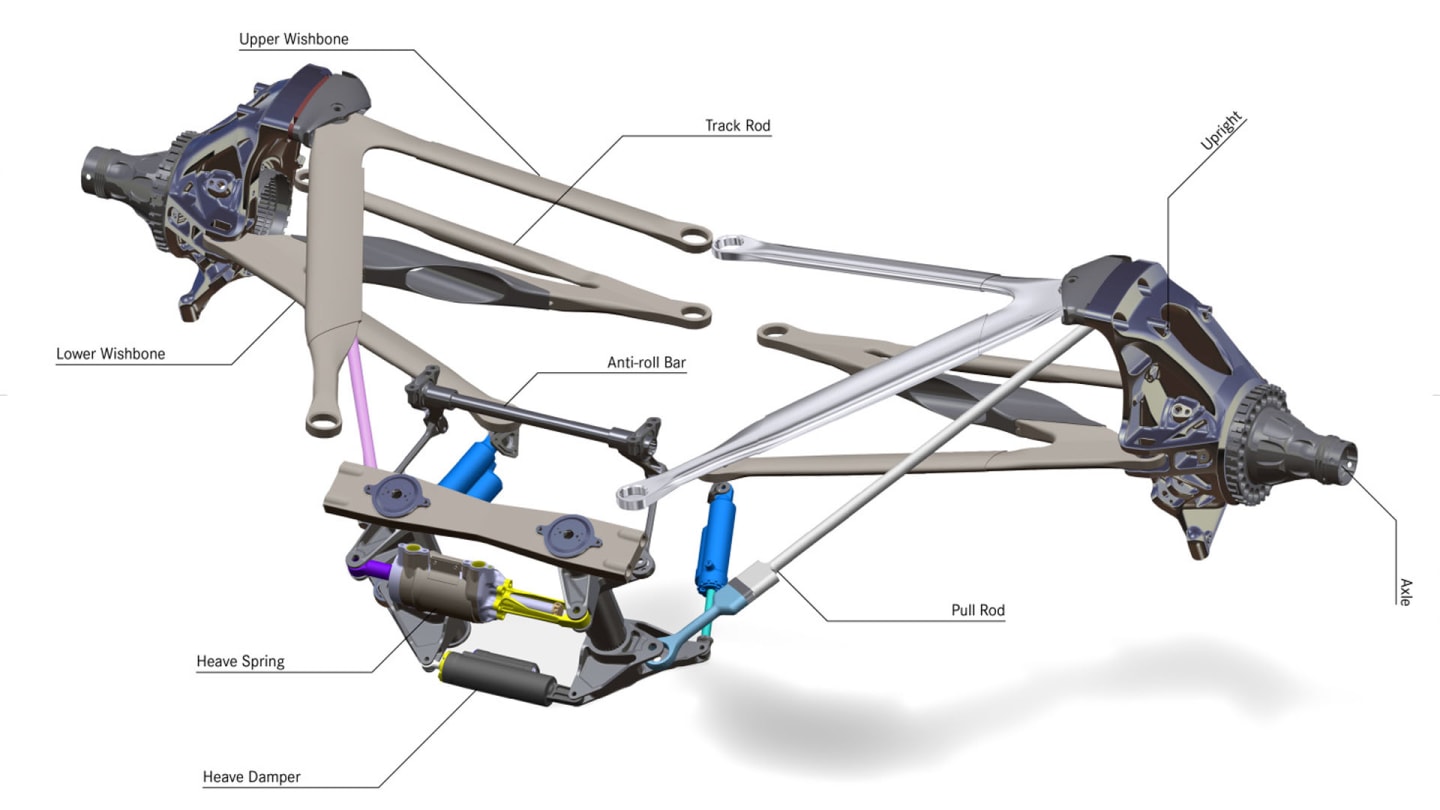
In the drawing above is last year’s W09 rear suspension.
In the drawing below, we see the current W10’s rear suspension, as seen from below the car, with 1. showing the front of the lower suspension leg, 2. the front of the upper suspension leg, 3. the pushrod which connects the the inboard springs/dampers to the wheel upright, 4. the driveshaft that runs through a hole within the lower leg and 5. the rear of the lower suspension leg.

Although we cannot see in this drawing, the separate points at which the lower suspension legs are joined to the wheel upright give an idea of how aerodynamically enhanced the suspension parts themselves are and this too plays a crucial part in creating that vital rear downforce.
YOU MIGHT ALSO LIKE
Feature What the teams said – Race day in Japan
News ‘Everything got worse and worse throughout’ – Tsunoda reflects on tough Qualifying debut for Red Bull in Japan

Video HIGHLIGHTS: Catch up on Verstappen's stellar victory at the Japanese Grand Prix
News Hadjar explains cockpit issues that left him ‘in pain’ as he warns against ‘silly mistakes’ in Japan GP


